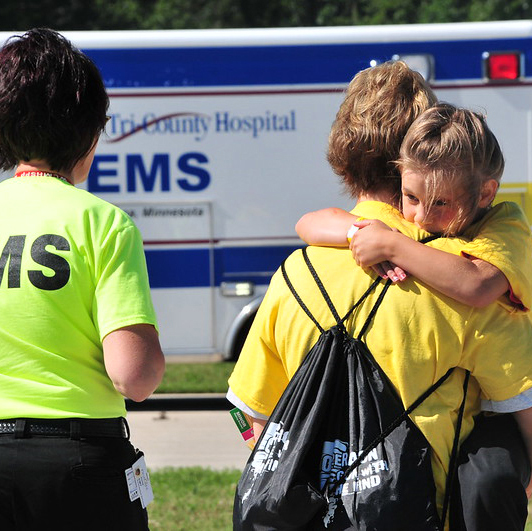The Minnesota State Fire Chiefs Association (MSFCA), an industry association that represents the leadership of Minnesota fire service providers, recently partnered with the Resilient Communities Project to advance one of their legislative priorities: improving emergency medical services (EMS) in Minnesota.
Specifically, MSFCA sought to analyze EMS regulations in Minnesota compared to other states, and understand legal precedent that may impact local EMS control.
City of Burnsville Fire Chief B.J. Jungmann, who also serves as MSFCA’s Legislative Chair, led the project, with input and guidance from other fire chiefs around the state. In spring 2021, Chief Jungmann collaborated with University of Minnesota law students Cole Birkeland and Scott May, under the guidance of Law School faculty adviser Paul Vaaler. During the summer, a team of four Master of Public Affairs students from the Humphrey School of Public Affairs continued work on the project through a capstone workshop taught by instructor Robin Phinney.
With the 2022 legislative session under way, RCP Program Coordinator Sarah Tschida asked Chief Jungmann about the significance of the project, how MSFCA is using the research findings, and what’s next for this initiative. The following interview has been edited slightly for length and clarity.
Why did MSFCA initially decide to undertake this project?
The MSFCA was working on an emerging state legislative issue about how ambulance services were regulated and [how] emergency medical services (EMS) are being provided across the state. The MSFCA legislative committee realized we needed to seek additional research and information. . .to inform our policy position so we could advocate for an educated policy change at the state legislature. We did not have anyone with the time or resources to conduct this research within the MSFCA.
Why was this the right time for the project?
At the Capitol and across the state, there has been an increasing discussion about the challenges Minnesota is experiencing with its current EMS environment. COVID exacerbated the [challenges of providing] emergency medical services in Minnesota. We knew that there would be an emerging discussion at the Capitol about how to provide EMS in the state. There were additional elected officials [with] EMS experience elected to the legislature as well. We knew we needed to be prepared.
Why did MSFCA turn to RCP and the University of Minnesota for assistance?
A few of us on the MSFCA Legislative Committee [heard] a presentation from RCP at a Metro Fire Chiefs meeting a couple of years ago. We were pursuing a statewide policy change [regarding] how EMS is regulated and provided in the state, but we did not have all of the research and analysis needed to inform our policy change. We thought back to the presentation we received at the Metro Fire Chiefs meeting, and a previous project [University of Minnesota students] did for fire service called Empty Boots, Quiet Sirens. Those experiences prompted us to think that RCP would be a great resource for this project. If we could find the right students, we believed this could be a great partnership to get students some experience and provide the MSFCA with the information needed to further our policy position.
How did MSFCA use the student research conducted through RCP?
We took the research and provided it to all of our legislative committee members and the board of directors. The final reports have been sent to stakeholders such as the League of Minnesota Cities and Minnesota Professional Firefighters to build a coalition that can advance this policy change at the Capitol. This information then was used to inform our policy position and a one-page information sheet that we will use to educate legislators. The final [student reports] will be provided to our lobbyists as background information.
I understand you also presented the students’ work at a statewide Fire Chiefs Conference last fall. How were their findings received?
There was much anticipation about this discussion. The room that was provided to discuss this topic turned into standing-room only. This report has sparked much discussion–both within the fire service, as well as [within] the Minnesota ambulance industry. We have had many productive conversations with the Minnesota Ambulance Association stakeholders.
What is the current status of MSFCA’s legislative effort?
We have just hired a lobbyist to represent us at the Capitol for this session. We are awaiting a report from the Office of the Legislative Auditor on this issue as well. We will continue to use this information as we move forward, attempting to change the current statutes and rules [regulating EMS provision]. It will likely be next year before we see any bill introductions, as the OLA audit is not out yet either.
Are there any other aspects of the project you would like to mention?
This has been a great opportunity to work with students. The law students both had connections [to] and interest in the fire service, and have followed this project even after their portion was completed. Following the completion of the project, there have been many stakeholder conversations prompted at the industry, local, and state level.
The students’ final research reports and presentations can be found on the UNiversity of Minnesota's Digital Conservancy:
- LAW 7606: Independent Research (Spring 2021)
- PA 8081: Public Affairs Capstone (Summer 2021)
